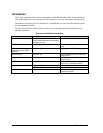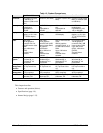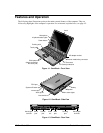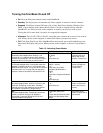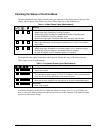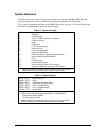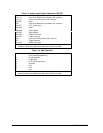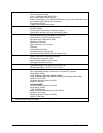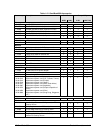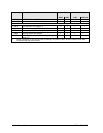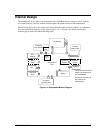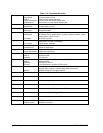
HP OmniBook 900 Product Information 1-7
System Resources
The tables in this section show typical resource usage as set up by the OmniBook BIOS. Plug-and-
play operating systems, drivers, and BIOS Setup settings may change some of the entries.
To see other, non-default possibilities, use the BIOS Setup utility (see page 3-24), which lists port and
audio device configurations in the System Devices menu.
Table 1-7. System Interrupts
0 System timer
1 Keyboard
2 Cascade IRQ 9
3 Free (or COM2 infrared port, if enabled)
4 COM1 (serial port)
5 Audio
6 Floppy drive
7 LPT1 (ECP parallel port)
8 Real-time clock
9 Free (OmniBook 900B)
Video (OmniBook 900†)
10 USB and CardBus - assigned by Windows driver
Video Controller (OmniBook 900B)
11 Free
12 Pointing device
13 Numeric data processor
14 Internal hard disk (primary IDE controller)
15 Internal CD-ROM drive (secondary IDE controller)
† Models called 900† in this manual have no marking in the serial number,
whereas models called 900B have 900 B after the serial number.
Table 1-8. System Memory
00000 - 9FFFF System memory
A0000 - BFFFF Video
C0000 - CBFFF
C0000 - CFFFF
Video BIOS (OmniBook 900†)
Video BIOS (OmniBook 900B)
CC000 - DBFFF*
D0000 - DBFFF*
Free** (OmniBook 900†)
Free** (OmniBook 900B)
DC000*- FFFFF System BIOS
* Approximate boundary.
** Valid uses for memory addresses CC000-DBFFF or D0000-DBFFF:
Upper memory blocks (UMBs).
PC card memory windows.
† Models called 900† in this manual have no marking in the serial number,
whereas models called 900B have 900 B after the serial number.




